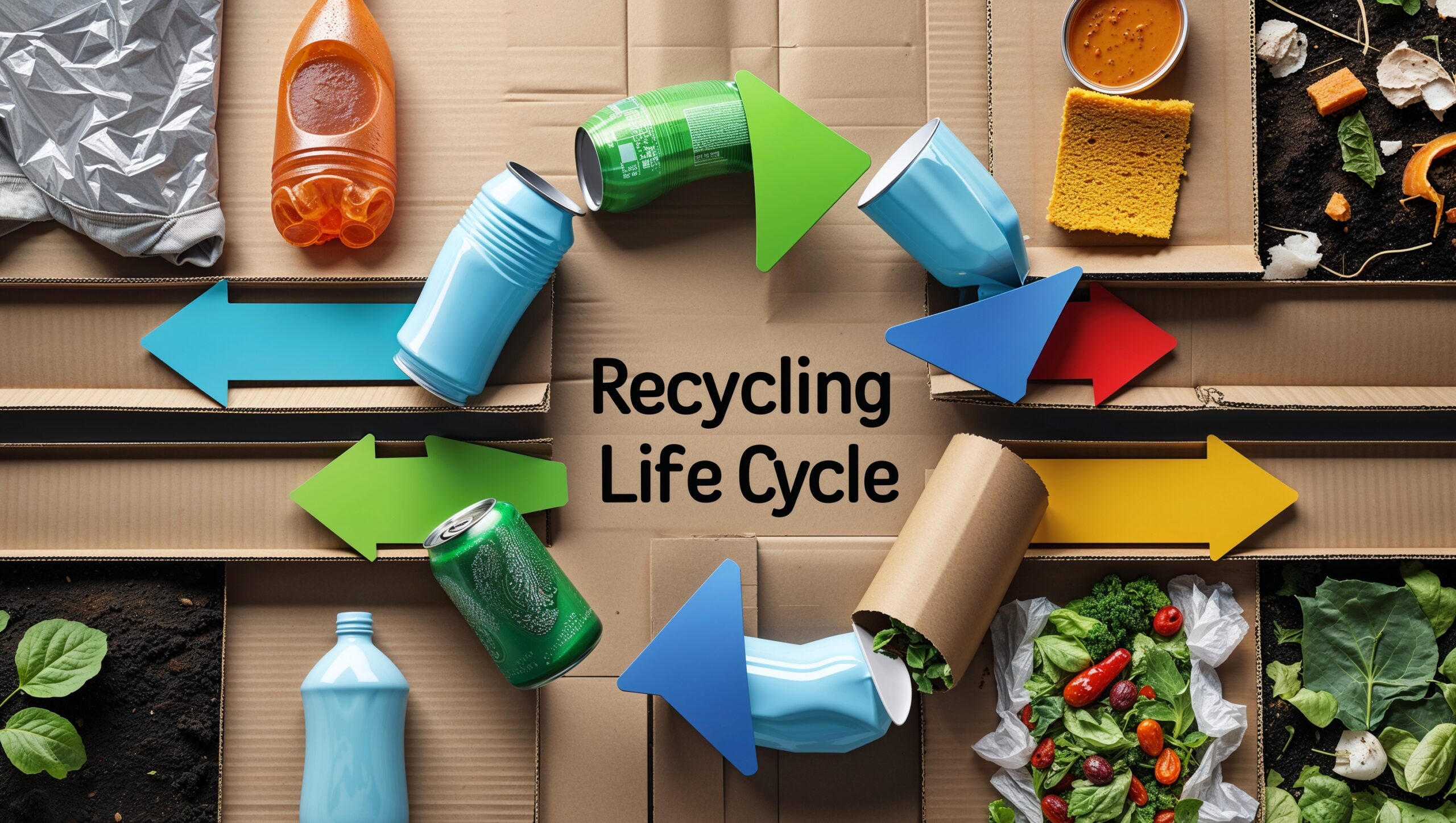We all know the basic idea of recycling — you put an item in the correct bin, and somehow, it becomes something new. But what actually happens after that? Understanding the life cycle of recycled materials helps us appreciate the value of proper sorting and motivates us to recycle more mindfully.
In this article, we’ll follow the journey of common recyclables — from the moment you toss them in the bin to their transformation into new products.
Why It’s Important to Understand the Recycling Life Cycle
Knowing where your recyclables go helps you:
- Sort waste more accurately
- Avoid contamination
- Make better purchase decisions
- Support products with recycled content
- Appreciate the impact of your efforts
Let’s break down how different materials are recycled and reborn.
♻️ 1. Plastic: From Bottle to Backpack (or Bottle Again)
What happens:
- Collected at curbside and transported to a materials recovery facility (MRF)
- Sorted by type and number (#1, #2, etc.)
- Cleaned, shredded into flakes or pellets
- Melted and reformed into new plastic products
✅ Common end products:
- New bottles or containers
- Fleece clothing or backpacks
- Carpeting and insulation
- Construction materials like plastic lumber
🚫 Challenges:
- Not all plastics are recyclable
- Contamination can ruin entire batches
- Most plastics are downcycled (made into lower-quality products)
📰 2. Paper: From Newspaper to Cardboard Box
What happens:
- Paper is sorted and baled at the MRF
- Sent to a paper mill
- Mixed with water to form slurry, then screened to remove ink and contaminants
- Pressed, dried, and rolled into sheets
✅ Common end products:
- Newspaper, tissue paper
- Egg cartons
- Paperboard and cardboard
- Office paper (if high quality)
🚫 Challenges:
- Wet or food-soiled paper cannot be recycled
- Fibers shorten each time paper is recycled (usually can be recycled 5–7 times)
🥫 3. Metal: From Can to Car Part
What happens:
- Aluminum and steel cans are sorted using magnets and eddy currents
- Crushed and melted at high temperatures
- Poured into molds or rolled into sheets
✅ Common end products:
- New beverage cans
- Car and airplane parts
- Building materials
- Bicycle frames and electronics casings
✅ Fun fact:
Aluminum can be recycled indefinitely without losing quality — and a recycled can returns to shelves in about 60 days.
🍾 4. Glass: From Jar to Jar (Again and Again)
What happens:
- Sorted by color (clear, green, brown)
- Crushed into cullet (small glass bits)
- Melted in furnaces and molded into new containers
✅ Common end products:
- New bottles and jars
- Glass tiles and countertops
- Reflective beads for road paint
✅ Bonus:
Glass can also be recycled endlessly without degrading in quality.
🚫 Challenges:
- Broken glass contaminates other materials
- Colored glass must be separated correctly
- Some facilities no longer accept glass due to cost
🔋 5. Electronics: From E-Waste to Raw Materials
What happens:
- Taken to certified e-waste recyclers
- Disassembled manually or mechanically
- Metals, plastics, and circuit boards are separated and refined
✅ Commonly recovered materials:
- Gold, silver, copper, aluminum
- Rare earth elements
- Plastic and steel casings
- Batteries (recycled separately)
🛑 Tip:
Never throw electronics in the trash — always take them to dedicated e-waste centers.
🌱 6. Organic Waste: From Scraps to Soil
What happens (composting):
- Food scraps and yard waste are collected
- Placed in compost piles or industrial composters
- Decomposed by microbes, turned regularly for oxygen
- Transformed into nutrient-rich compost
✅ End uses:
- Garden and farm soil
- Erosion control
- Landscaping and city greening projects
Composting reduces methane and closes the loop for organic materials.
The Role of You — the Recycler
You’re the first step in the recycling life cycle. Every material needs to be:
- Properly sorted
- Cleaned of food or contaminants
- Placed in the right bin
From there, the system depends on facilities, manufacturers, and consumer demand for recycled content.
Closing the Loop: Buy Recycled Products
Recycling only works if there’s demand for recycled materials.
✅ Support the full cycle by:
- Choosing products labeled with “post-consumer recycled content”
- Supporting brands with circular production models
- Avoiding items made from unrecyclable or mixed materials
Buying recycled completes the circle and keeps the system sustainable.
From Trash to Treasure — Literally
That water bottle you tossed in the bin? It might become a jacket.
That can of soda? Back on the shelf in two months.
That food scrap? A flower bed in your local park.
Recycling is more than disposal — it’s transformation. And your actions help make it happen.
